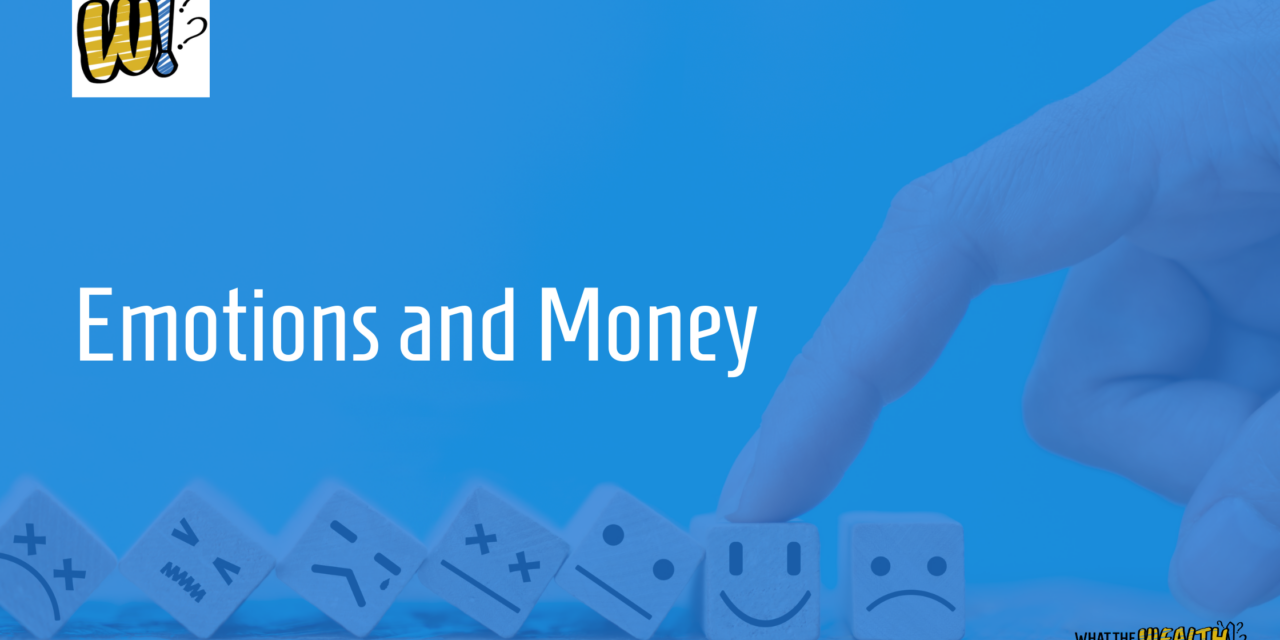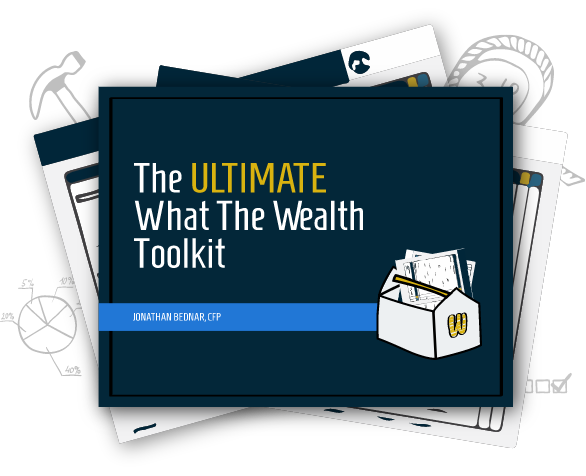The stock market and economy have been sources of stress for many of us recently, causing fear, anger, despair, anxiety, a whole variety of emotions, most of them negative. But what we do with those emotions has a tremendous impact on our finances. Today we’ll discuss emotions and money.
Psychology or Math?
Carl Richards, a Certified Financial Planner and creator of the New York Times Sketch Guy column, recently said,
“We all know that no matter how worried, scared, or excited we’re feeling, 2+2 always equals 4. But when it comes to money, money equals feelings. As it turns out, money is in the psychology department, not the math department.”
We all have emotions around money. You feel happy and excited if you get a raise, find $100, or make money in the market. If you take a pay cut, lose $100, or lose money in the market, you feel angry, anxious, and upset. Those feelings are normal. But they can cause problems when we let those emotions influence our decisions.
Bears, Bulls, and the Long Term
The recent nosedive in the market has put the S&P 500 into a bear market. A bear market means stocks have declined at least 20% from their most recent high. The question I’ve been getting a lot is if it’s best to move money out of the market. Going to cash feels good; it’s a proactive step, and we feel better when we take action.
But as the Oracle of Omaha said,
“When it’s raining gold, put out a bucket, not a thimble.”
A bear market is an excellent opportunity to buy assets and see a big long-term return. And getting out of the market creates another question, when do you get back in? When people pull out of a bad market, they often wait too long to get back in and miss out on the inevitable recovery. How inevitable? Let’s see what history has to teach us.
- From 1926 through 2021, the S&P 500 Index saw 17 bear markets with declines from 21% to 80%, each lasting an average of ten months.
- In that same time period, there were 18 bull markets when the Index was up at least 20% from a previous drop, with gains from 21% to 936%!.
- Those bull markets lasted an average of 55 months, a little over four years.
There has been a bull for every bear with one left to spare! The only investors hurt by a bear market are those who jump off the rollercoaster mid-ride. Those who have the discipline to ignore their emotions when making investing decisions saw tremendous rewards.
History
Not convinced? Okay, let’s look at some more history. Money may be more psychology than math, but it’s history too!
Between 1940 and 2021, the U.S. stock market and the world have suffered through numerous crises. Just to name a few:
- Pearl Harbor
- The Korean War
- The Cuban Missile Crisis
- JFK assassination
- Watergate scandal
- September 11th
- Lehman Brothers collapse
- Brexit
- Covid Pandemic
If you had invested $10,000 in a fund that mirrors the S&P 500 Index (You can’t invest in the S&P 500. It’s just an index that tells us how the market is performing.) in December 1940 and left that money invested until December 2021, you would have $76 million! All of those cataclysmic events, and yet the market still makes money. Over that time, the annualized average return was 11.67%.
Have a Plan
When the market is volatile, the most frequent answer a good CFP will give you when you ask what you should do is, “Nothing.” But that’s not entirely true. Do nothing means don’t panic and sell your investments. But there are things you can do in a volatile market and a bear market that can be part of a solid financial plan.
First of all, take a step back. Does what’s happening really impact you? If you’re 35 and have no plans to retire early, a bear market won’t impact you long-term in any meaningful way. Your portfolio has a couple of decades to recover.
In fact, a bear market can be the best time to invest. If you’re prepared to jump on an opportunity because you have a healthy emergency fund, opportunity fund, or war chest, you can take advantage of a bear market.
You can’t take the emotion out of money. In fact, my 1 Page Wealth Plan uses emojis to convey some of those emotions! But you can take the emotion out of your financial decisions. I know that’s easier said than done, so if you need some help, I’m here! Together we can help you Live The Life You Love.
The Book is Out!
On June 15h, my second book came out! What The Wealth!: Identify Your Core Values, Reignite Your Dreams, and Combat the 5 Big Retirement Risks.
The book focuses on the most important parts of retirement planning, identifying your core values and reigniting your dreams so you can build a framework of purpose and fulfillment and enjoy your greatest asset, time confident in your retirement.
What the Wealth is not affiliated with, nor endorsed by, LPL Financial or Paradigm Wealth Partners.
Listen to the Full Episode:
What You’ll Learn In Today’s Episode:
- The relation between money and emotions.
- How emotions cloud our judgment.
- A common mistake people make when the market is down.
- Why you need to pause and what you need to be considering right now.
- Some of the best times to invest.
- What to do when your assets are down.
- The history of economic downturns and what it can show us.
Ideas Worth Sharing:
“All kinds of emotions are centered around the interactions you have with money.” – Jonathan Bednar
“It’s important to be aware of our emotions and how they influence our decisions—that’s the big risk.” – Jonathan Bednar
“When you panic or capitulate, you often miss out on the recovery.” – Jonathan Bednar
Resources In Today’s Episode:
- Jonathan Bednar: Email | Twitter | LinkedIn
- The Emoji Guide to Investing
- What The Wealth: Identify Your Core Values, Reignite Your Dreams, and Combat the 5 Big Retirement Risks® by Jonathan Bednar
- What The Wealth?! by Jonathan Bednar
- Bulls, Bears and Long Term Benefits of Stock Investing
- Markets Recover From Crises
Enjoy the show? Use the Links Below to Subscribe:





